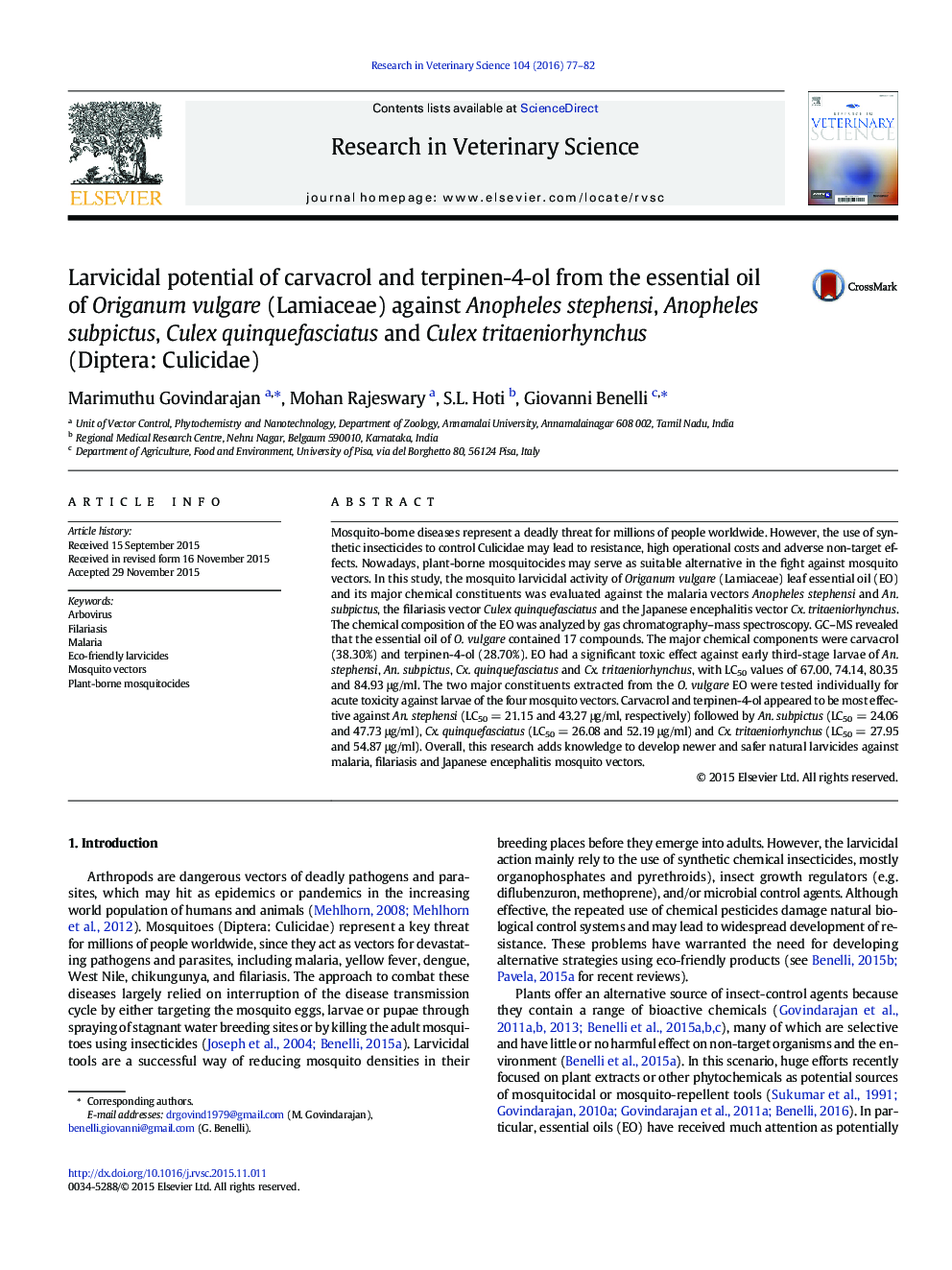| کد مقاله | کد نشریه | سال انتشار | مقاله انگلیسی | نسخه تمام متن |
|---|---|---|---|---|
| 5794530 | 1554307 | 2016 | 6 صفحه PDF | دانلود رایگان |

- Origanum vulgare essential oil (EO) was tested against larvae of 4 mosquito vectors.
- Chemical compositions of the EO were analyzed by GC and GC-MS.
- Carvacrol and terpinen-4-ol were the major constituents of the EO.
- LC50 values against the four mosquito vectors ranged from 21.15 to 27.95 μg/ml.
- Carvacrol and terpinen-4-ol may be considered as eco-friendly larvicides.
Mosquito-borne diseases represent a deadly threat for millions of people worldwide. However, the use of synthetic insecticides to control Culicidae may lead to resistance, high operational costs and adverse non-target effects. Nowadays, plant-borne mosquitocides may serve as suitable alternative in the fight against mosquito vectors. In this study, the mosquito larvicidal activity of Origanum vulgare (Lamiaceae) leaf essential oil (EO) and its major chemical constituents was evaluated against the malaria vectors Anopheles stephensi and An. subpictus, the filariasis vector Culex quinquefasciatus and the Japanese encephalitis vector Cx. tritaeniorhynchus. The chemical composition of the EO was analyzed by gas chromatography-mass spectroscopy. GC-MS revealed that the essential oil of O. vulgare contained 17 compounds. The major chemical components were carvacrol (38.30%) and terpinen-4-ol (28.70%). EO had a significant toxic effect against early third-stage larvae of An. stephensi, An. subpictus, Cx. quinquefasciatus and Cx. tritaeniorhynchus, with LC50 values of 67.00, 74.14, 80.35 and 84.93 μg/ml. The two major constituents extracted from the O. vulgare EO were tested individually for acute toxicity against larvae of the four mosquito vectors. Carvacrol and terpinen-4-ol appeared to be most effective against An. stephensi (LC50 = 21.15 and 43.27 μg/ml, respectively) followed by An. subpictus (LC50 = 24.06 and 47.73 μg/ml), Cx. quinquefasciatus (LC50 = 26.08 and 52.19 μg/ml) and Cx. tritaeniorhynchus (LC50 = 27.95 and 54.87 μg/ml). Overall, this research adds knowledge to develop newer and safer natural larvicides against malaria, filariasis and Japanese encephalitis mosquito vectors.
Journal: Research in Veterinary Science - Volume 104, February 2016, Pages 77-82